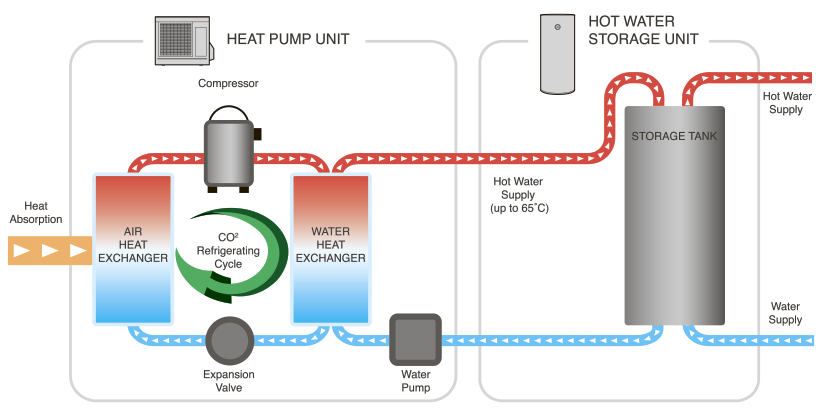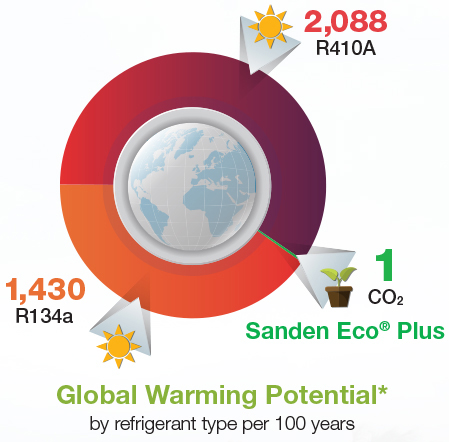Choosing a hot water system? Discover the Sanden Eco® Plus Hot Water Heat Pump System
How does the Sanden Eco® Plus Hot Water Heat Pump System work?
View the Sanden Hot Water Heat Pump Product BrochureThe Sanden Eco® Plus Hot Water Heat Pump System works in a different way compared to a conventional electric hot water system – it operates like a refrigerator in reverse.
The Sanden Eco® Plus uses a small amount of energy to move heat from one location to another. Heat is absorbed by ozone-friendly R744 (CO2), a natural refrigerant which does not contribute to global warming.
As the warm gaseous refrigerant circulates through the system, it passes through the compressor and its pressure and temperature rises. The hot refrigerant then passes through a heat exchanger which heats the water. The refrigerant is cycled back into the system, and hot water is pumped to the storage tank.
How Heat Pump Hot Water Systems Work
Watch Video

